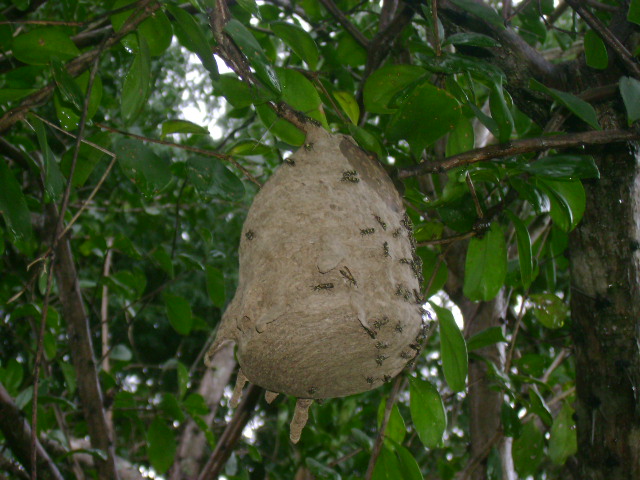Knowing how to eliminate wasps (Panal de avispas) and their nest can save your life or that of your loved ones. Wasps, like many other insects, can attack a person if they are considered at risk. A bite from this animal can be quite annoying, and even become a serious problem if the affected person has an allergic reaction. It is important to control the spaces frequented by humans, and to have knowledge on how to eliminate them wisely and effectively.
A common wasp is between 1 and 1.5 cm long, black in color, and has yellow bands on its body. This hymenopteran insect has a poisonous stinger that it can use to defend itself if it feels attacked (in the case of the queen, it can use it repeatedly); it can even use its jaws to ward off the potential attacker. The appearance of more than one wasp specimen should not be taken lightly; It is important to see a professional to eliminate the possibility that someone could be injured by a sting.
Where do wasps usually nest?
To know how to remove wasps and their honeycomb (Panal de avispas), you first need to know where to find them. A nest can be found in many places: check the branches of the trees, but also their roots, and even under small mounds of earth, as some wasps can nest under these surfaces outside. It is common to find them on the roof, in the frame of a window, and anywhere that the wasps consider a sufficiently stable and secure support. Homes, commercial establishments, offices, restaurants or hotels can be affected by the threat of a honeycomb and put the inhabitants, visitors or workers of the place at risk.
The queen wasp usually begins to build its nest in spring, after hibernation – this is the ideal time to discover and eliminate them. Later, hornets will be added to help her in the construction of the place, which can reach the size of a soccer ball, and store tens of thousands of wasps.
Queen wasps use their jaws to extract pieces of wood, break the fibers inside their mouth using saliva and water to soften them, and then use the strong mixture to bind to the honeycomb (Panal de avispas) support.
Read More : House Speaker Donald Trump 2022: This could be a nightmare for the Biden administration
What to do if we find a hornet’s nest?
Coming across a specimen does not mean that there is a pest threat. But if there is more than one wasp in a place, it is convenient to find out where they come from, and, if possible, follow them at a safe distance until they guide us to their hive. The next thing we should do is contact a professional to deal with the problem.
It is important that under no circumstances make sudden movements such as waving your arms or shaking your body, if you are in the middle of a group of wasps, as they could feel threatened and sting you.
In case of sting …
If you are sure that you do not have an allergic reaction to the insect’s venom, the first thing to do is remove the stinger with a flat object, being careful not to squeeze the stinger and thus prevent more venom from being released.
Free the area of any clothing, and if possible, it is advisable to elevate it to reduce swelling.
Apply cold to the affected area for 10 minutes. It will ease the discomfort.
It is necessary to keep the wound clean to avoid infection. Apply soap and water.
If you are not sure if you are not allergic, or you begin to have a more violent reaction to the sting, you should seek medical assistance immediately. The victim may be facing a case of anaphylaxis, which can cause: breathing difficulties, speech problems, nausea or vomiting, rapid heart rate, severe itching and even loss of consciousness.
Keep in mind that 1 in 30 people has an allergic reaction to a wasp sting.
How to eliminate wasps and their honeycomb (Panal de avispas)?
A hornet’s nest can be eliminated at home, or professionally. In case of being a small honeycomb, and being absolutely sure of not being affected by a sting beyond the discomfort (not being allergic), you can eliminate it in different ways:
Spray insecticide on wasps and honeycomb (Panal de avispas)
Use a vacuum cleaner, previously pouring a little soapy water inside, to make sure that they die when they are vacuumed.
Use smoke, forcing the wasps to go out in search of oxygen.
But, any of the options outlined on how to eliminate wasps and their nests with home methods can mean a high risk for you and those close to you (especially children and the elderly), and even for structures. Regardless of whether it is your home, business premises or company, if you are facing a situation of wasp infestation, it is advisable to go as soon as possible to professionals who, with the appropriate experience, clothing and instruments, will solve the problem without risk. no bad times.
Read More : Koi Diamond- the jewel from Congo
